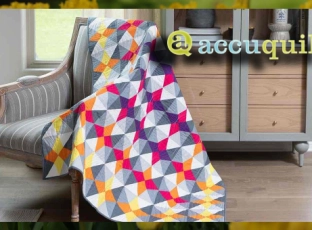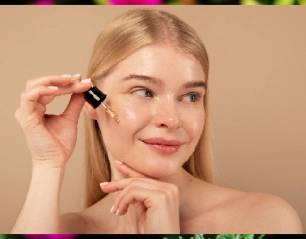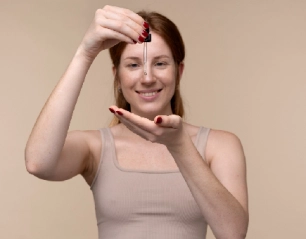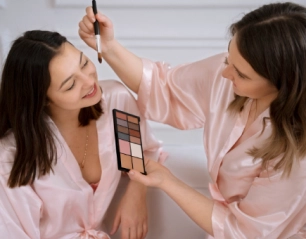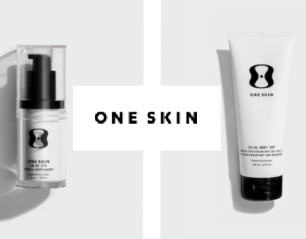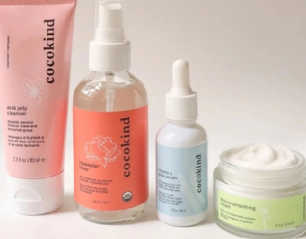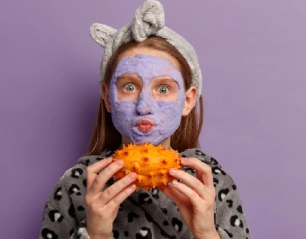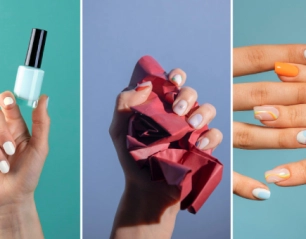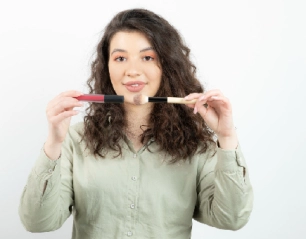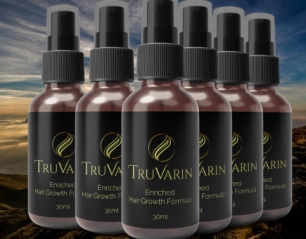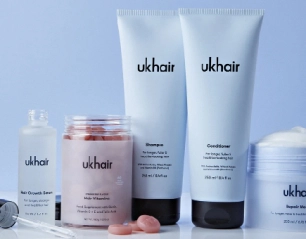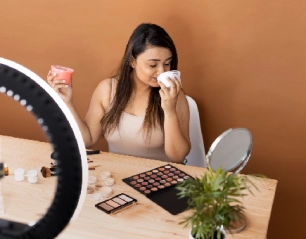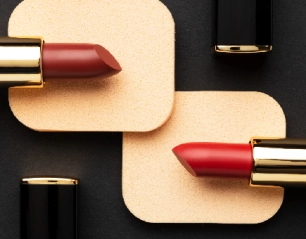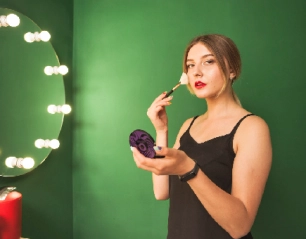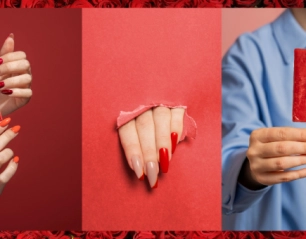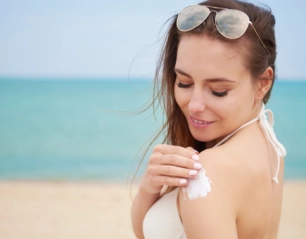The process of hot waxing stands as one of the most successful approaches to obtain completely bare skin on the face. You need to treat your facial skin gently during waxing since its delicacy surpasses normal body skin. Learning hot wax processes along with their advantages should be combined with knowledge of potential risks to minimize facial skin damage when you want to achieve optimal results from your hot wax session.
Understanding Hot Wax and Its Benefits
Before application on the skin hot wax requires heating to reach a precise temperature. To remove the wax from the hair fast, one needs to pull the dried wax upwards causing the hair to be pulled out of its root location. Unlike cold wax strips, The method of using hot wax delivers superior performance in catching thin hairs and delivers lengthier outcomes through its silkiness. Hot wax provides an advantage through opened pores from heat delivery so the wax removal process becomes less painful.
Hot wax shows enhanced precision when used on the facial areas such as the upper lip and eyebrows and chin. Due to its direct attachment to hair instead of skin tissue hot wax diminishes inflammatory damage and prevents scraping injuries that shaving can cause.
Can Hot Wax Be Utilized Safely for Each Type of Skin?
Hot waxing presents minimal safety risks for diverse skin types while people with sensitive skin need to implement additional care. Individuals with dry skin along with those who have acne problems or rosacea may experience skin reactions such as redness or irritation and limited burning injuries because of incorrect waxing procedures. Before using hot wax on extensive facial areas people who have delicate skin should accomplish an allergy test on their skin first.
People who use retinoids, as well as exfoliating acids or strong skincare treatments, should exercise caution during the waxing process because their skin shows increased susceptibility. Products that thin skin layers create increased chances for both peel damage and skin irritation. It is smart to ask for professional guidance from a dermatologist during these situations before trying facial waxing.
Steps Before You Apply Hot Wax
The application of facial wax demands proper skin preparation which reduces both pain and discomfort. Wash your face until all traces of makeup together with dirt and oil are completely gone. Performing exfoliation procedures a day before waxing will remove dead skin cells from your body which thereby allows wax to catch onto hairs more effectively. Exfoliation during the period between waxing sessions should be avoided because it will increase skin sensitivity.
Check that your face hair reaches an optimal length for successful waxing. A correct length for hair to undergo waxing treatment should measure ¼ inch. Waxing requires hair that is neither too short nor too long because proper grip will be lost when the hair length is short yet prolonged hair may result in more intense pain. Before waxing do not use heavy moisturizers because such products form barriers that prevent proper wax adherence.
Choosing the Right Hot Wax for the Face
Facial waxes need to be the better quality wax that has been specifically created for sensitive areas. Hard wax is generally the preferred method of waxing the face because it adheres only to the hair and not to the skin, thus minimizing irritation. Soft wax is usually strip wax, which can sometimes be too irritating for the delicate skin of the face. Other helpful ingredients in a hot wax include aloe vera, chamomile, or azulene. Strongly-scented waxes and those with harsh chemicals that could trigger an allergic reaction or irritation should be avoided. Hypoallergenic waxes are available If there is highly sensitive skin; they provide a gentler option.
Waxing Face: Step-by-Step Guide
To achieve the best results with minimal discomfort, the following steps are required for the application of hot wax onto your face:
- Heating the wax properly: Heat the wax using a wax warmer or better yet, a microwave, avoiding cool or too hot temperatures. A warm temperature may be able to cause some discomfort upon application. Always perform a patch test on your wrist with small amounts before placing it on the face.
- Apply the wax in the direction of hair growth: Spread a thin, even layer of wax over the area using a spatula, applying in the same direction of the hair growth.
- Let set: Let the wax set for a bit after cooling from the heat. Hard wax should snap when you pull it; there would be no need for a strip, while soft wax would be in need of a strip for pulling.
- Place tough and go: Hold the skin down (taut) with one hand while the other hand more or less swiftly pulls back the wax in a direction against the hair growth. Try to do that swiftly, it reduces pain and provides better removal.
- Soothing the skin immediately: Apply cooling gel, aloe vera, or mild moisturizer to calm the skin and reduce redness. Try not to touch the waxed site too much.
Common Mistakes to Avoid While Waxing Your Face
While hot waxing is highly productive and efficient, it often leads to some common mistakes that may cause skin injuries or ineffective wax jobs.
- Overheating the wax is a major offense because wax can get hot and burn. Always check the temperature before waxing any part of the face.
- Another common thing to do is to wax the same area many times. This causes irritation, peeling, or even scarring. If any hair is left behind after your first try, plucking out the remainder is the best option instead of redoing the wax immediately.
- Another mistake is to use the wrong type of wax. The soft wax that can be used for the body is probably too aggressive for the face. Unnecessary redness and irritation might arise. Always use wax formulated for the face.
Post-Waxing Skin Care: How to Prevent Irritation
After waxing, the skin is already a little bit sensitive; therefore, a proper aftercare routine should be followed. Avoid unnecessary touching of your face, because there are bacteria in your hands that can result in breakouts. You can use some soothing gel or aloe vera to decrease the redness or irritation. The first 24 hours after waxing, direct sunlight, sauna, steaming, and hot showers are a No-No, as are any other factors that may warm the skin. Give your skin a break, put off using makeup, and treat any redness or little bumps with anti-inflammatory creams or witch hazel.
Other Methods to Remove Hair from the Face
If hot waxing is not appropriate for your skin type or you just can’t put up with the pain, there are options to consider instead. Threading effectively removes hair in a precise manner, particularly over the eyebrows and upper lip. Threading is less aggressive than waxing; variable discomfort may still be an issue.
Laser hair removal gives a more long-lasting way of permanent facial hair reduction. While laser hair removal might require several sessions and a hefty investment, it is actually good at reducing hair growth eventually. Depilatory creams are another option, yet their chemical component is notorious for skin irritation, especially sensitive skin.
Conclusion
Hot waxing is an effective and long-lasting facial hair removal procedure involving pre-wax preparation, wax application, and post-wax care to limit skin irritation. Choosing the proper wax type and following the steps correctly, in combination with aftercare, will yield smooth, hairless skin with minimal discomfort. However, if your skin is sensitive or prone to acne, consider other methods or consult a professional before waxing.
Frequently Asked Questions (FAQs)
Yes, but you should use wax formulated for facial skin and apply all necessary precautions to prevent irritation.
Apply aloe vera or a soothing gel, avoid heat and cosmetics for 24 hours, plus keep the area clean and moisturized.
Ideally, every 3-4 weeks, to allow for healing and to avoid irritating the skin due to over-waxing.
Was this helpful?




